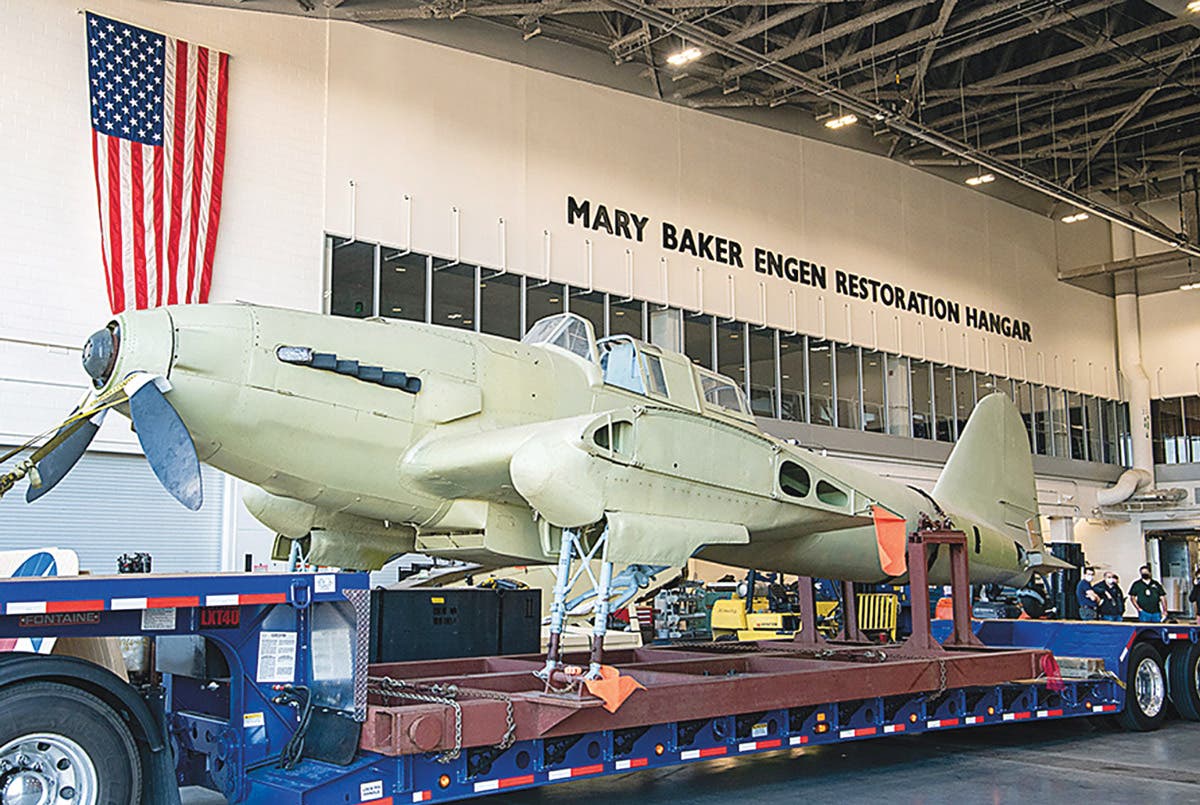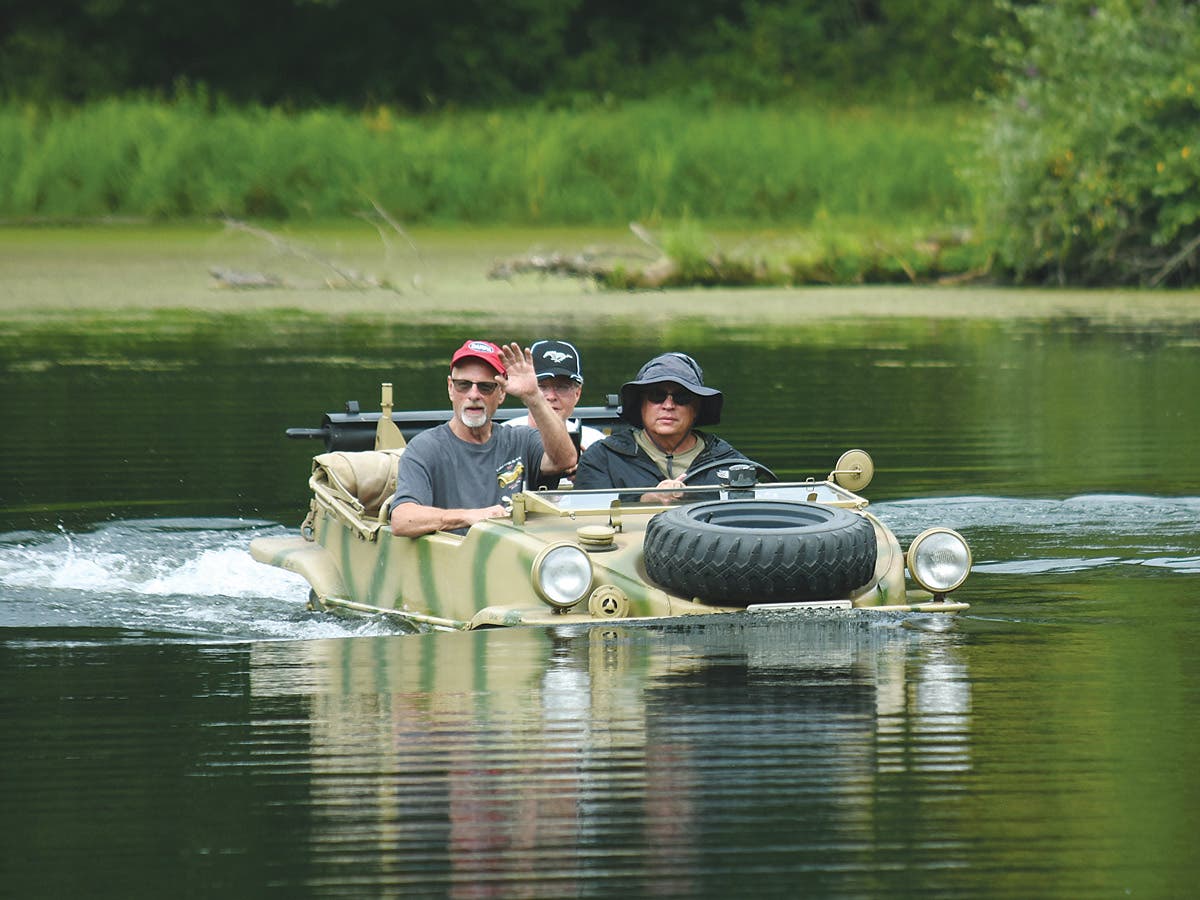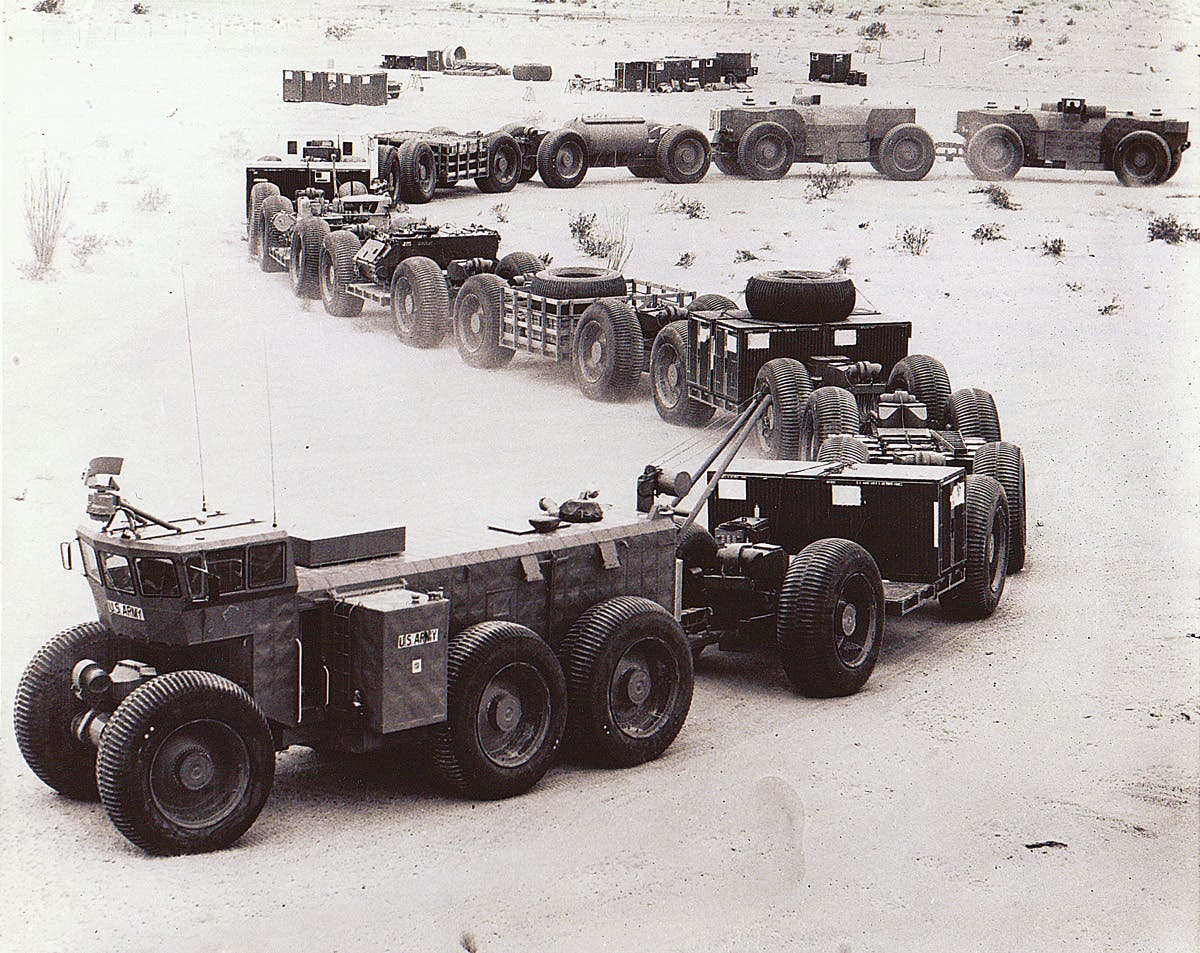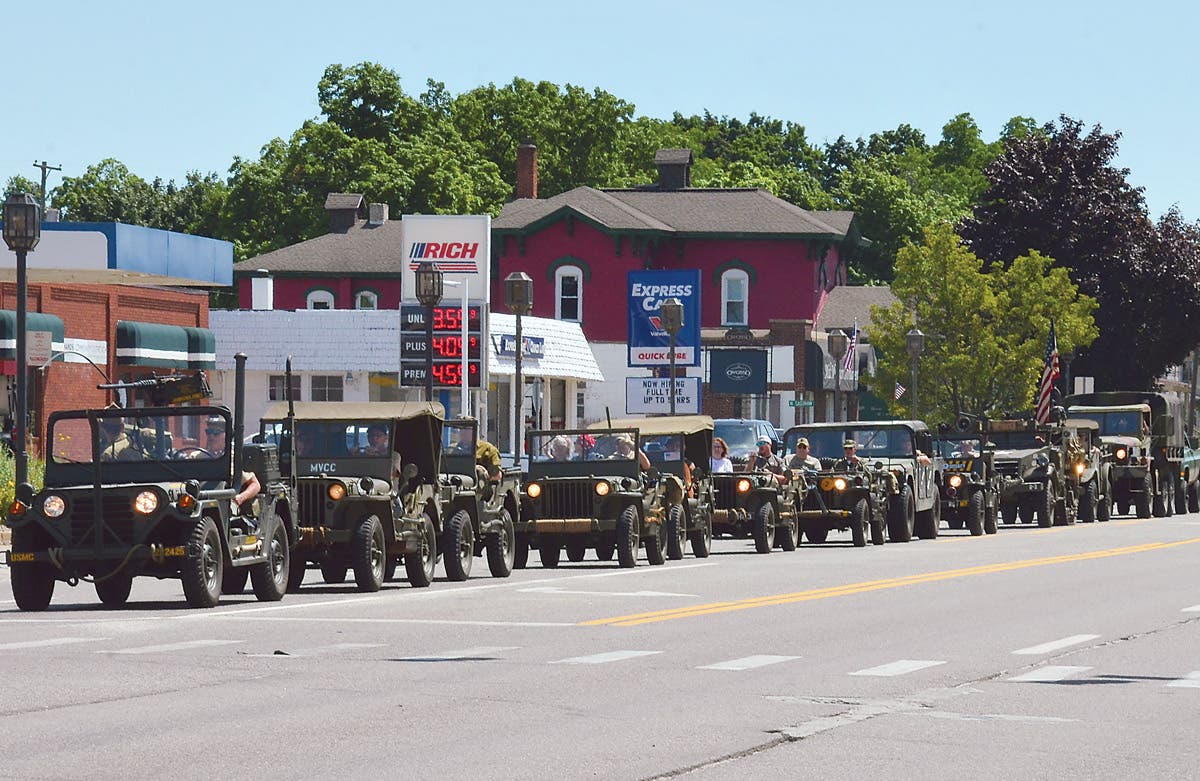A look at the ‘Staghound’
The ‘Staghound’ Chevrolet T17E1: An unlikely game changer for the British
It sometimes happens that coincidence can be an unexpected, but important factor when it comes to developing a new design for an armored fighting vehicle and an army looking for a particular vehicle to suit its needs. That is just what happened in July 1941 when the U.S. Army Ordnance Department announced that it was seeking a new medium armored car and issued its list of requirements. By coincidence, the British Purchasing Commission, the BPC, located in New York City since 1940 for the purpose of locating and arranging for the production and purchase of weapons and vehicles from American companies, was searching for new designs of armored cars for the British Army, which was engaged in fighting against Italian and German forces in North Africa.
The British were interested in two designs put forward for consideration. The first was a 6x6 vehicle by the Ford Motor Company. This was the T17, a very limited number of which would later enter service with the British army where it was known as the “Deerhound”. The other vehicle was referred to as the T17E1, a smaller, 4x4 design, produced by the Chevrolet Company. It would prove to be the more successful of the two. Personnel from the BPC met with Earle MacPherson, chief design engineer at Chevrolet, who agreed to begin series production of the T17E1 to meet British requirements. In December 1941, an initial order was placed for 300 vehicles. The U.S. Army expressed an interest in the vehicle, but would later decide against it and instead go for the M8 Armored Car. The British Army would come to call their T17E1 the “Staghound”.
The first example of the T17E1e was delivered in March 1942, to the Aberdeen Proving Ground in Maryland, where it was put through a series of field trials. The design was very advanced and incorporated several innovative features, such as two rear-mounted engines with automatic transmission and the ability to change between 4x4 and 4x2 drive. In addition, one engine could be turned off while the vehicle was moving and the power steering pump could be isolated, depending on operational conditions. The need for a separate chassis was avoided due to the rigidity of the design, which had the steering and suspension attached directly to the hull. The external fuel tanks were fitted on either side of the vehicle mounted between the two wheel arches and could be jettisoned in an emergency, greatly increasing the vehicle’s operational range.
Despite all these features, or perhaps because of them, a number of technical points which needed revising were revealed. With promises that corrections would be made, the British placed an expanded order for 1,500 vehicles, leading to production commencing in October that year. By the end of the war some
3,844 T17E1 armoured cars in all variants had been produced, including an anti-aircraft version. The bulk of the production run included 2,844 of the Mk I version, which had been completed by December 1943.
By the time the first vehicles were ready to enter service, the campaign in North Africa was over. However, they did not have to wait long before being committed to action during the Italian campaign in 1943, where they were used by the British Army and Commonwealth countries, including Canada, India and New Zealand.These vehicles were dubbed the Staghound Mk I. Later, during the campaign in north-west Europe in 1944, the Belgian “Piron”’ Brigade, attached to the British 6th Airborne Division and taking part in the later stages of the Normandy campaign, were equipped with Staghound armored cars.They were well liked by the crews, who appreciated the fast turn of speed, good operational range and ability to cope with rugged terrain. The Staghounds were easy to drive and maintain. A typical armoured car regiment equipped with Staghounds would have three vehicles at regimental HQ level and a further three in each of the regiment’s four squadrons.
Armour protection varied in thickness between 6.35mm and 12.7mm on the hull floor, 19mm on the sides of the hull, 31.5mm on the turret sides and 45mm turret front. The cast turret, into which was fitted the main armament in the form of a gyroscopically stabilized M6 37mm gun, was designed at the Rock Island Arsenal. The turret would also be fitted to the “Deerhound” and with the same gun. The main gun, for which 103 rounds were carried, could be elevated between +40 degrees and -7 degrees. The power-operated turret, with a full 360 degree traverse, had a “basket” which reduced internal space, but still left sufficient room for three men and the installation of the vehicle radio. All of this met British army requirements.
Secondary armament included three Browning M1919A4 .30-cal. machine guns, for which a total of 5,250 rounds were carried. One machine gun was mounted co-axially to the right of the main armament and another fitted into a ball-mounting in the glacis plate. The third machine gun could be fitted to a pintel mounting on the roof of the turret if needed to provide extra fire support.
For its compact size the Staghound was operated by a crew of five; the commander, loader, gunner, driver and hull machine gunner. Access was through two hatches in the turret roof and a pair of single doors set low down in the hull and mounted on either side just behind the front wheel. The driver and hull machine gunner’s positions had armored covers, into which were fitted vision blocks, which could be raised or lowered. Tools, including spades and picks, were carried strapped to the vehicle, which also had stowage containers fitted either side for other items.
In addition to the Mk I Staghound, a further five variants of the vehicle were developed to various stages and used in varying numbers. The first of these originated in America was known as the T17E2. It was as an attempt at developing a self-propelled anti-aircraft version to provide defense when in convoy. This version had the turret and hull machine gun removed and replaced by a new, open-topped design fitted with two Browning .50-cal. heavy machine guns in high-angle mounts designed by the British company of Frazer-Nash, which also produced servo-motor powered turrets for bomber aircraft. The vehicle carried more than 2,600 rounds and was operated by a crew of four with the guns capable of traversing through 55 degrees per second. It is believed that 789 of these were built from an initial order of 1,000 between October 1943 and April 1944.
The Staghound Mk II was a short-lived project which never progressed beyond the prototype stage. The idea called for the original turret to be removed and replaced by the type fitted to the Howitzer Motor Carriage M8 armed with a 75mm M2/M3 howitzer intended to provide close support. The prototype was put through trials in December 1943, but the project was eventually abandoned.
Although unsuccessful, the Mk II did lead to another idea, known as the Mk II”Close Support”. Instead of replacing the turret, in this case only the gun was changed. In this version the original 37mm gun was replaced with the Mk I 3-inch howitzer and the hull machine gun was removed. Not very much is known about this version, not even how many were produced. Some were used by Canadian units, probably at armored car HQ section level.
The T17E3, or Mk III, was a successful attempt to”up-gun” the Staghound by replacing the original turret with the same type as that used on the British Crusader tank, with its well-angled riveted shape but with a 75mm gun capable of firing high explosive rounds to provide fire support. The bow machine gun of the Staghound was also removed and secondary armament was provided by a 7.92mm BESA machine gun mounted co-axially in the turret. Exact figures for the numbers produced vary, with most references stating somewhere between 100 and 300 entered service in early 1945. In post-war years, the Danish Army made use of about eight Mk III Staghounds, which remained in service between 1946 and 1953 until being finally retired in 1960.
The last “official”’ version of the Staghound was the “Command”, a very simple and easy conversion to complete. It required the removal of the turret and additional radio equipment fitted for improved communications. However, there were some unofficial versions developed during the late stages of the war. One Canadian creation was known as the “Tulip.” It involved mounting two launching rails either side of the turret on the Mk I Staghound to allow four 60-lb. rockets to be fired. These projectiles were more commonly fired against tanks by aircraft such as Typhoons.
Sherman tanks had been used in a similar idea and Canadian “Tulip” systems saw action in France during 1944. Although not very accurate, the rockets delivered a hefty punch. Other types of rockets were tried, such as the 3- and 5-inch types used on the “Land Mattress” system. Unfortunately, the propulsion blast from the rockets being launched frequently caused damage to the carrying vehicles and the project was dropped in February 1945.
Finally, the last wartime project involving the Staghound was the development of mine-detecting project called “Bantu”. Large supporting arms were fitted to extend forward and to the rear of the vehicle and arried two drums containing electronic equipment to detect mines. The concept had been proven using a Sherman tank, known as “Lulu”, and although potentially useful the equipment was considered too bulky and clumsy and the idea dropped.
In its intended role as an armored car, the Staghound was a sound and well-liked vehicle which continued in service until the end of the war. Even afterwards, some remained operational in the British Army. These were used in the post-war conflicts in which Britain became embroiled, such as Palestine in 1948. Some Mk III vehicles were re-configured with replacement turrets from AEC Mk III armored cars and armed with 75mm main gun and a co-axial 7.92mm BESA machine gun. Some of these saw service in the Lebanon in 1956 and carried a .50-caliber machine gun fitted on the turret roof with a gun shield. Those remaining vehicles deemed surplus to requirement fitted were sold off to various overseas forces, such as the Dutch and Belgian armies, Italy and Greece. The Swiss were inclined to make modifications to their Mk I Staghounds, known as Radpanzer, including replacing the 37mm main gun with a 47mm PaK 41. Another project involved replacing the main gun with a Swiss-built Hispano-Suiza HS 820 20mm anti-aircraft gun in a high-angle mount. Capable of firing up to 1,000 rounds per minute, the weapon was featured in other configurations and the Staghound combination was probably a test bed to trial the weapon and prove mounting options.
No one could have foreseen what an influential and diverse design would emerge from the vehicle turned down by the American Army. Today there are various examples of Staghounds to be seen in museums in those countries which used them and a few are in private ownership and make occasional appearances at shows. Examples come up for sale, mostly the Mk I version, since they were built in the largest.
Any Staghound seen at a show it is always well worth investigating more closely to learn about a vehicle with such an unusual service history.








